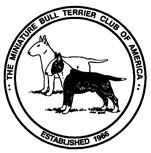|
MBTCA HEALTH
COMMITTEE REPORT 3-3-99
This report will bring you up to
date on the progress of the lens luxation project under way at the
University of Missouri. I spoke with Dr. Gary Johnson last month. He is
pleased with the number of blood samples being sent in. He now has at least
thirty of these samples, possibly more as it is several weeks since I called
him. His staff is currently working on the pedigrees of the dogs whose blood
samples have been received. It is very important that he already has samples
from at least two dogs with lens luxation and several samples from close
relatives of these dogs.
The actual DNA testing of the
blood samples will begin after the pedigree analysis is done and the
researchers have a sense of what type of inheritance is involved. It has
been assumed that lens luxation is caused by a defective recessive gene. But
there are some people who think it might be due to a defective dominant
gene. Perhaps there are several genes involved. It is hoped that the present
study will help to answer existing questions about mode of inheritance.
It is very important for all
people who own mini-bulls to realize that there is no time limit for sending
in blood samples. It is also important to send samples from normal dogs as
well as from those already luxated. Because of the late onset of this
genetic defect, minis who seem normal now may luxate in the future. The
greater the number of minis involved, the larger the sample of the mini
population studied and the greater the opportunity to fill in extended
pedigrees of mini families, both normal and affected.
Marilyn Drewes |
